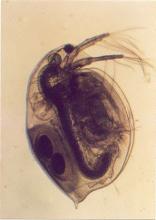Data provider
Budapest University of Technology and Economics, Department of Applied Biotechnology and Food Science, Environmental Microbiology and Biotechnology Group
Contact details
Compulsory sheet
Information on the method
Measured endpoint
Description of the measurement technique
Measuring range
Implementation conditions
Implementation costs
Innovation, main features
A Daphniára gyakorolt káros hatást mozdulatlanná válása jelzi. Nem tudni elpusztult-e.
Szennyezett felszíni víz, csurgalék, felszín alatti víz, kivonat toxicitásának vizsgálata.
Nehezen összegyűjthetők a teszthez használatos 24 órás egyedek.
szabvány szerint
SWOT (evalaution based on scores)
SWOT (evaluation in words)
Széleskörű alkalmazhatóság, kis környezeti és munkahelyi kockázat, könnyen elérhető, érzékeny és nem szelektív tesztorganizmus.
A tesztorganizmus érékenysége függ az életkortól és a forrástól. 24 órás állatokat nehéz összeszedni.
A teszt előírt időtartama sokszor kevésnek bizonyul, hogy biztos hatást mérjünk.
A krónikus teszt kevéssé elterjedt, pedig többet mutatana.
Fejlesztési lehetőség: szaporodásgátlás vizsgálata hosszú idejű tesztben.
A szennyezőanyagon kívül más hatások is gátolhatják.
Other information, references
Az akut teszt időtartama sokszor kevésnek bizonyul.
A krónikus teszt elterjesztése és alkalmazása célszerű lenne, melyben a szaporodásgátlást is lehetne vizsgálni.Ehhez táplálékot kell biztosítani a tesztállatok számára a teszt időtartama alatt.
MSZ EN ISO 6341
OECD 202: http://www.oecd.org/dataoecd/17/21/1948249.pdf
Lakatos, Gy., Fleit, E., Mészáros, I. (2003) Ecotoxicological studies and risk assessment on the cyanide contamination in Tisza river, Toxicology Letters, 140-141, 333-342
Completed applications
A 2000-ben történt tiszai cián és toxikus fém szennyezés hatásait vizsgálták többféle ökotoxikológiai teszttel, a szennyezés hatása az ökosztisztémára észrevehető volt, ez a módszer mégsem indikálta a toxikus anyagok jelenlétét, mert a halakra nem volt letális hatással a szennyezett felszíni víz. A vizsgálatnál javasolt lett volna teszt más végpontjának alkalmazása,mint például a bioakkumuláció.
